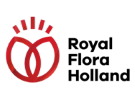Bernard Zuidgeest is a board member of nursery Together2Grow. That 'together' is not only in the company name, but also in his spare time, in which he likes to play ball or kickball with friends. He recently expressed his concern about the hub in Naaldwijk in the FPC Alstroemeria. In this column, he elaborates on this and highlights solution directions.
'Naaldwijk is the most important hub for flower growers. The bulk of flowers are grown in Westland. Yet the supply of flowers to this very hub is decreasing. As a result, flowers for, among others, the United Kingdom are crossing the A4 twice. First to the north, to Aalsmeer, and then back south again, to the Hook of Holland. That is worrying. And it is up to growers, exporters and Royal Flora Holland to turn the tide.
Because why are we doing it this way? Many large exporters choose one hub for cost reasons. And that hub is Aalsmeer. We growers follow the exporters. They are our customers after all. We take the extra transport costs for granted. Not to mention the unnecessary extra environmental burden that this way of organizing causes. That has to change. But if exporters and growers keep looking at each other, nothing will happen. And I think Royal FloraHolland also has a role to play in putting the hub in Naaldwijk even better on the map.

Let's face it: no grower in the Westland is going to be happy about transporting flowers to Aalsmeer unnecessarily. Flowers for the markets in Scandinavia and Germany? Those can go to that hub just fine. But are the flowers going south or to the United Kingdom? Then use the hub in Naaldwijk. That is less harmful to the environment and it reduces costs. If we all make that choice, the exporters will follow automatically. Saving costs and CO2 tax is also important for them. They just need to become more aware.
What can Royal FloraHolland do? I do not believe in obligation. I think that change works better if the parties themselves are behind it. It has to come from the market. Because market parties understand why it is necessary. That prevents resistance and ensures support. But the cooperative can of course make the hub in Naaldwijk more attractive. For example, by lowering rents. Or by speeding up delivery times even further.
It also works that way for pricing. Most of the flowers now end up in Aalsmeer. This allows for fast delivery, and exporters are happy to pay for that. But there is a maximum to this. At some point the ceiling in Aalsmeer is reached, both in terms of space and personnel. Then delivery times increase and prices fall. By distributing flowers better - and by sales market - over the various hubs, we can prevent that.
In short: spreading our flowers over the various hubs has many advantages. It reduces (transport) costs and CO2 emissions. We can deliver faster and more efficiently, which in turn has a positive impact on pricing. And we are assured of continuity in the manpower and space available at the hubs. That's a win-win-win: for us as growers, for our customers and for the cooperative. It's time to act now.'
For more information: Royal FloraHolland
Royal FloraHolland
www.royalfloraholland.com
